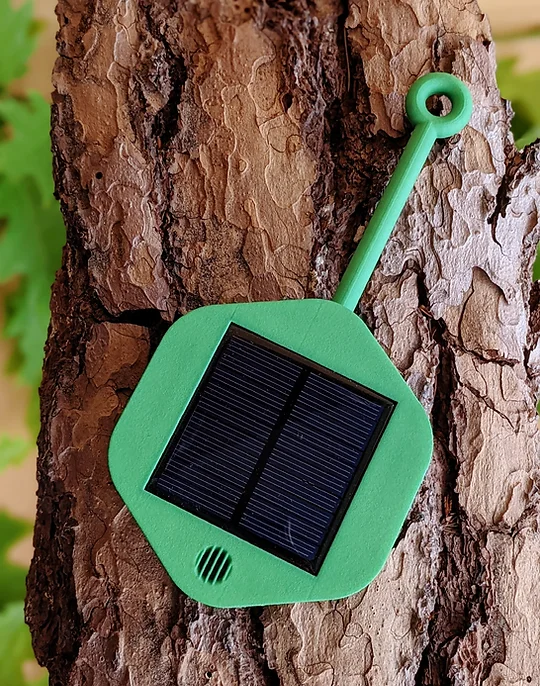
Image credit : Waste360 Proponents of a bold pl...
news-extra-space

 Image: Electrek[/caption]
Wildfires contribute up to 20% of global CO2 emissions, the same amount as all traffic (cars, planes, and ships combined). Each year, wildfires cause more than $140 billion in economic losses and have a disastrous impact on biodiversity, killing more than 3 billion animals.
We can't rely on a mobile network operator's coverage in a forest, so we're building our own wireless network infrastructure. Our system's key innovation is a solar-powered "mesh network architecture" that enables huge, off-grid deployments while overcoming issues with limited internet access.
Dryad can build a network across even the most remote forest by utilising the most recent Internet of Things (IoT) developments, solar-powered sensors, and "mesh gateways." Our sensors, which have built-in artificial intelligence, are placed directly into forests to track air composition and can "smell" a fire in its smouldering phase.
Image: Electrek[/caption]
Wildfires contribute up to 20% of global CO2 emissions, the same amount as all traffic (cars, planes, and ships combined). Each year, wildfires cause more than $140 billion in economic losses and have a disastrous impact on biodiversity, killing more than 3 billion animals.
We can't rely on a mobile network operator's coverage in a forest, so we're building our own wireless network infrastructure. Our system's key innovation is a solar-powered "mesh network architecture" that enables huge, off-grid deployments while overcoming issues with limited internet access.
Dryad can build a network across even the most remote forest by utilising the most recent Internet of Things (IoT) developments, solar-powered sensors, and "mesh gateways." Our sensors, which have built-in artificial intelligence, are placed directly into forests to track air composition and can "smell" a fire in its smouldering phase.
 After that, the sensors send an alert signal via our large-scale IoT mesh network architecture. Data is collected and monitored at our cloud monitoring platform, which provides ultra-early wildfire alerts.
In Northern California, Dryad is collaborating with PG&E to show its Silvanet large-scale IoT network solution for early wildfire detection. Asset-mounted sensors, a mesh network based on LoRaWAN - the top open standard for long-range radio IoT networks - and cloud-based data analysis are all part of the network. Dryad's "ultra-early" wildfire detection technology is meant to detect wildfires before they spread.
The company's products are being used in Southern Europe, and it is collaborating with several other utilities around the world. Existing systems depend on satellites or cameras installed in the forest to detect fires, which can take days or even weeks.
Wildfires are oftenly too large and uncontrollable by the time firefighters arrive. Dryad tries to spot wildfires within the first 60 minutes, allowing firefighters to put them out before they spread out of control. Our technology takes into account forest canopy densities and can operate at night, ensuring deployment and dependability in sparsely populated areas and difficult-to-reach forests.
After that, the sensors send an alert signal via our large-scale IoT mesh network architecture. Data is collected and monitored at our cloud monitoring platform, which provides ultra-early wildfire alerts.
In Northern California, Dryad is collaborating with PG&E to show its Silvanet large-scale IoT network solution for early wildfire detection. Asset-mounted sensors, a mesh network based on LoRaWAN - the top open standard for long-range radio IoT networks - and cloud-based data analysis are all part of the network. Dryad's "ultra-early" wildfire detection technology is meant to detect wildfires before they spread.
The company's products are being used in Southern Europe, and it is collaborating with several other utilities around the world. Existing systems depend on satellites or cameras installed in the forest to detect fires, which can take days or even weeks.
Wildfires are oftenly too large and uncontrollable by the time firefighters arrive. Dryad tries to spot wildfires within the first 60 minutes, allowing firefighters to put them out before they spread out of control. Our technology takes into account forest canopy densities and can operate at night, ensuring deployment and dependability in sparsely populated areas and difficult-to-reach forests.
Leave a Reply






